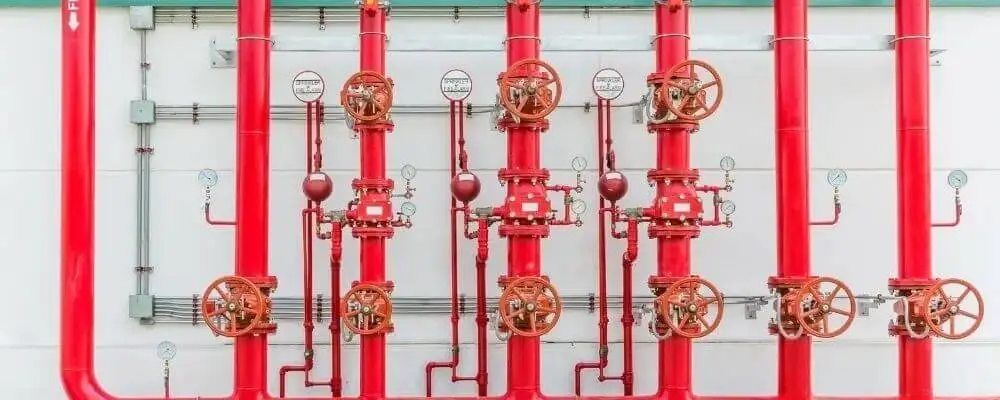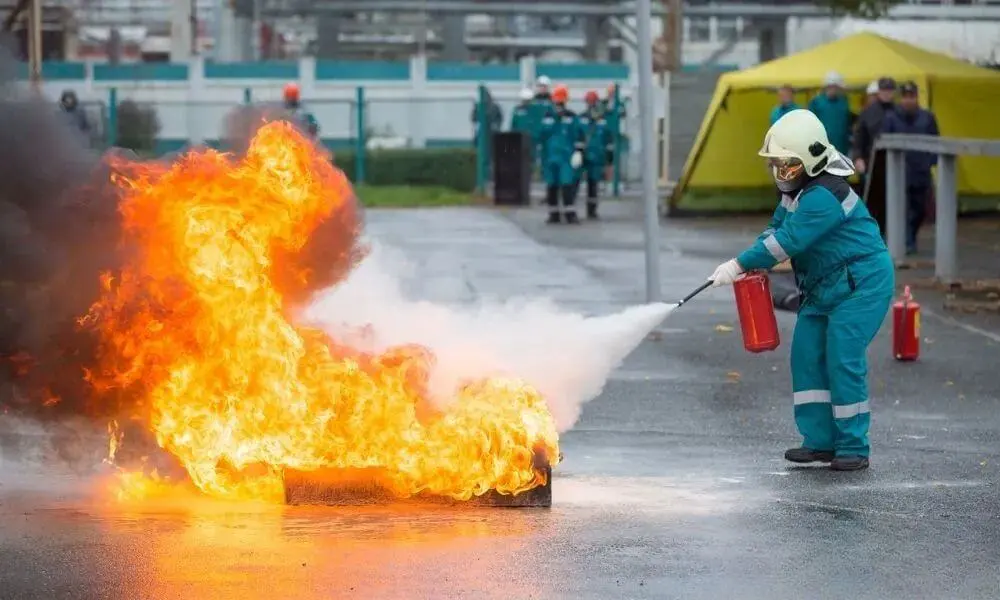What are the three methods of fire extinguishing? The three primary fire extinguishing methods are starvation (removing fuel), smothering (removing oxygen), and cooling (removing heat).
The sight of a flame can be comforting when confined to a fireplace, but the same cannot be said when it’s consuming our property or threatening human lives. Understanding how to extinguish fires is essential for everyone’s safety. So, what is this article all about? We aim to demystify fire and its extinguishing methods. Buckle up; this is going to be a hot topic!
Fire Triangle
To effectively extinguish a fire, we need first to comprehend what a fire is. Think of fire as a love triangle, aptly called the “Fire Triangle, ” involving fuel, oxygen, and heat. To extinguish a fire, we must effectively break this triangle. But how does the type of fire influence its extinguishing method?
In the context of fire safety, the Fire Triangle represents the three components a fire needs to exist: heat, oxygen, and fuel. A fire cannot start or continue if one of these components is missing. To extinguish a fire, one must remove or isolate at least one element of this triangle.
Classes of Fire
Fire classes categorize fires based on the type of fuel involved. They range from Class A (combustibles like wood and paper) to Class K (cooking oils and fats). Each Class requires a unique extinguishing method.
Methods Of Fire Extinguishing
The primary methods of fire extinguishing are starvation, smothering, and cooling, each attacking a different component of the Fire Triangle.
Starvation
Starvation involves removing or isolating the fuel. Without fuel, a fire will gradually die out. This might involve moving combustible materials away from the fire. An example would be creating firebreaks in a forest fire.
Smothering
Smothering attacks the oxygen component of the Fire Triangle. Covering the fire with a non-combustible material can deprive it of oxygen, effectively putting it out. Ever seen a fire blanket in action? That’s smothering!
Cooling
Cooling is one of the common methods of fire extinguishing. By reducing the temperature of the fuel to below its ignition point, the fire will go out. This is typically achieved by applying water, which absorbs heat as it becomes steam.
Detailed Fire Extinguishing Techniques
Let’s delve into the specifics, shall we? Here, we’ll explore various fire-extinguishing tools and how they employ the abovementioned methods.

Use of Fire Extinguishers
Fire extinguishers come in different types, each designed for a specific fire class.
Dry Chemical Fire Extinguishers
Dry chemical extinguishers interrupt the chemical reaction at the heart of a fire. They’re effective against multiple fire classes and work by smothering the fire.
CO2 Fire Extinguishers
CO2 extinguishers replace the oxygen around the fire with carbon dioxide, smothering the fire and removing heat from the cold discharge.
Water Fire Extinguishers
Water extinguishers are mainly used for Class A fires. They remove heat and cool the fire, causing it to extinguish.
Fire Blankets
Fire blankets are used to smother small fires. They cut off the fire’s oxygen supply, causing it to extinguish.
Fire Buckets
Filled with sand, fire buckets can be used to smother a fire, removing the oxygen element of the Fire Triangle.
Fire Hoses
Fire hoses deliver large volumes of water to a fire, drastically reducing the heat and potentially controlling the fire until professionals arrive.
Special Fire Extinguishing Methods
Now let’s step into the high-tech world of fire safety, exploring systems that automatically detect and suppress fires.

Fire Suppressing Systems
These systems, often installed in commercial buildings, use a variety of agents to extinguish fires. Depending on the system’s design, they can employ water, dry chemicals, or inert gases.
Fire Retardants
Fire retardants slow the spread of fires by reducing the flammability of combustibles. They are often used in forest fire control.
Methods Of Fire Extinguishing – Conclusion
Knowing the methods of fire extinguishing is not only for professionals; it is a vital life skill. From understanding the Fire Triangle to utilizing specific techniques, we all can contribute to creating safer environments. Please leave it to the experts when in doubt, and evacuate safely!
